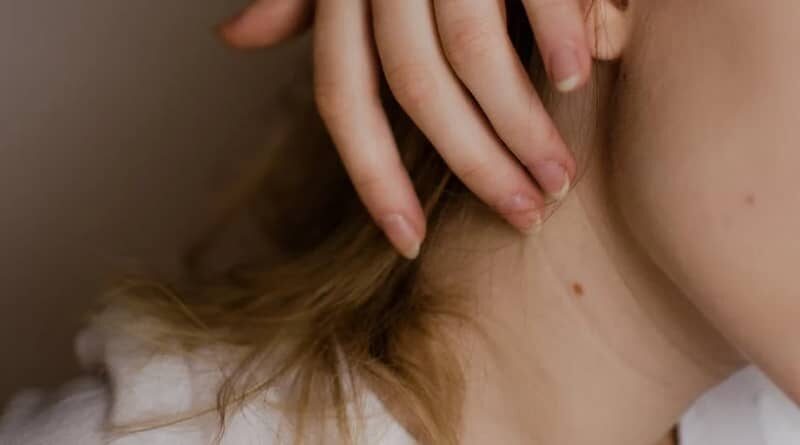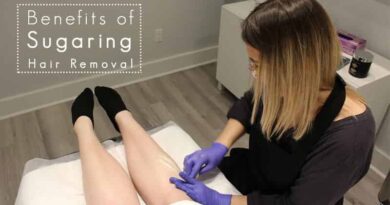Does Stress Affect Moles on Our Skin?
Stress is a universal experience that can result from various challenges, including work pressure, financial issues, or personal relationships. While stress is known to cause biological changes in the brain, it also impacts physical health—and the effects are particularly visible on the skin. Understanding how stress affects skin health, including the appearance and behavior of moles, can help you maintain better skin care.
Table of Contents
How Stress Impacts the Skin
During stressful periods, the body produces increased levels of cortisol, often referred to as the “stress hormone.” This hormone, produced in the adrenal glands, can weaken the immune system, alter blood pressure, and stimulate sebaceous glands to produce more oil. This can lead to:
- Acne flare-ups
- Sensitive skin
- Rashes
- Wrinkles and loss of elasticity
- Dryness or flakiness
Stress also worsens pre-existing skin conditions such as psoriasis, eczema, and rosacea. Research indicates that stress can impair the skin’s barrier function, leading to increased dryness and inflammation.
Can Stress Affect Moles?
Moles are small, pigmented spots formed by clusters of melanocytes—the cells responsible for producing melanin. These moles typically develop due to genetic factors and sun exposure. Stress itself does not directly cause moles to form or increase the likelihood of them turning into melanoma (skin cancer). However, stress can indirectly affect skin health by compromising the immune system, which may influence overall skin condition and healing processes.
Types of Moles
Common Moles
- Description: Most adults have between 10 and 40 common moles.
- Appearance: Usually brown, circular, and symmetrical; can be flat or slightly raised.
- Size: Typically less than 5mm in diameter.
Congenital Nevi
- Description: Present at birth and occur in about 1 in 100 people.
- Risks: Slightly more likely to develop into melanoma than moles appearing later in life.
- Appearance: Often larger, round or oval, and raised.
Dysplastic Nevi
- Description: Larger and irregular moles that may appear uneven in shape and color.
- Risks: Higher likelihood of developing into melanoma; should be monitored closely.
Monitoring Your Moles
Regular mole checks are essential, especially if your skin is frequently exposed to sunlight or tanning beds. Look for:
- Changes in size, shape, or color.
- Symptoms such as itching, bleeding, or crusting.
Healthy moles are typically:
- Symmetrical.
- Evenly bordered.
- Uniform in color.
- Smaller than ¼ inch (6mm).
- Stable without new changes.
If you notice any unusual changes, consult a dermatologist promptly.
Stress Management and Skin Health
To protect your skin during stressful periods:
- Follow a balanced diet: Include antioxidants, vitamins, and omega-3 fatty acids.
- Protect your skin: Use broad-spectrum sunscreen with SPF 30 or higher.
- Hydrate: Use moisturizers containing anti-inflammatory ingredients like aloe vera, chamomile, and rosemary.
- Practice relaxation techniques: Activities like yoga, meditation, and deep breathing can lower cortisol levels.
Professional Mole Checks
If you’re concerned about your moles, a professional mole check can provide peace of mind and early detection of potential issues. Options include:
Full Body Mole Check
A dermatologist examines all moles and lesions using a dermatoscope for magnification and detail. If any moles are suspicious, removal or further treatment is discussed.
Full Body Mole Mapping
Using advanced systems like Fotofinder, high-resolution images of all moles are captured and analyzed. Artificial intelligence aids in identifying changes, and dermatologists review results for accuracy. This method allows for annual comparisons to detect subtle changes over time.
Why Early Detection Matters
Detecting melanoma early significantly improves survival rates. Melanoma diagnosed at an early stage has a 99% five-year survival rate, whereas advanced melanoma can drop to around 60%.
Conclusion
While stress does not directly cause moles, its effects on the immune system and overall skin health make it crucial to manage stress effectively. Regular self-checks and professional mole evaluations can ensure your skin remains healthy and protected from serious conditions like melanoma.
FAQs
1. Can stress cause new moles to appear? No, stress does not cause new moles to form. Moles primarily develop due to genetic factors and sun exposure.
2. Can stress make existing moles cancerous? Stress does not directly turn moles cancerous. However, weakened immunity from chronic stress may affect overall skin health.
3. How often should I check my moles? Perform self-checks at least once a month, especially if you’re frequently exposed to sunlight or have a family history of skin cancer.
4. What are the warning signs of melanoma? Look for asymmetry, irregular borders, multiple colors, a diameter larger than 6mm, and changes in existing moles.
5. Should I avoid sun exposure if I’m stressed? Yes, minimizing sun exposure is always beneficial. Use sunscreen and protective clothing to safeguard your skin.
References
- National Psoriasis Foundation. (2015). Study on stress and psoriasis.
- American Academy of Dermatology Association. Guidelines for mole checks and melanoma prevention.
Author Bio
Conveniently located in South Manchester, Cheadle village town centre, Everything Skin Clinic is a unique Consultant-led dermatology clinic that offers treatment of all skin conditions under one roof.
Our team of highly trained Consultant Dermatologists have completed specialist training in Dermatology and are on the specialist register of the General Medical Council. All our consultants hold substantive contracts with the best Dermatology centres in leading NHS hospitals. You can, therefore, be assured of the highest quality private dermatology care.
Our private dermatology clinic is unique in that all aspects of dermatology treatments are catered for. From blemishes to eczema or psoriasis, facial redness to mole mapping and mole removal, from excision of melanoma to Mohs Surgery for basal cell carcinoma, skin, hair, or nail disorders are diagnosed treated at Everything Skin Clinic by our expert.
Consultant dermatologists.
In 2020, Everything Skin Clinic joined The Dermatology Partnership. The aim of the partnership is to build the UK’s leading dermatology group, defined by its clinical excellence and focus on leading dermatological care.
Recommended Articles:




